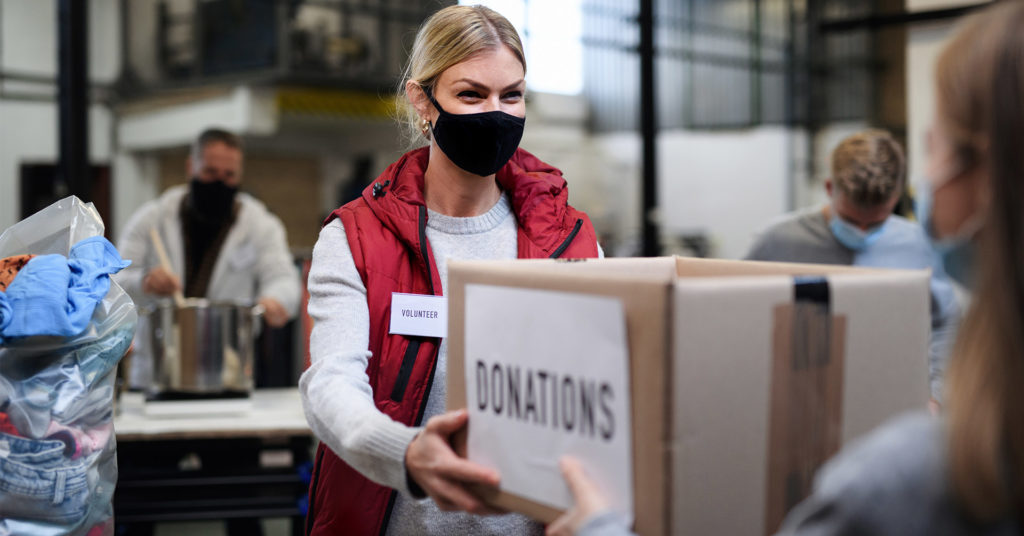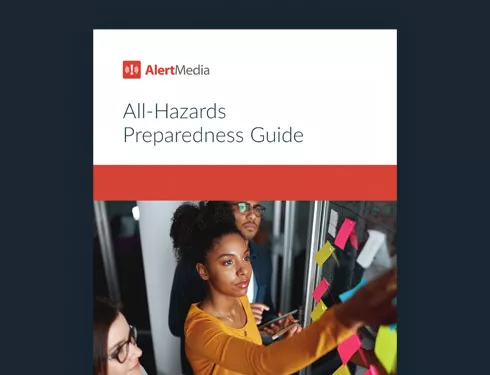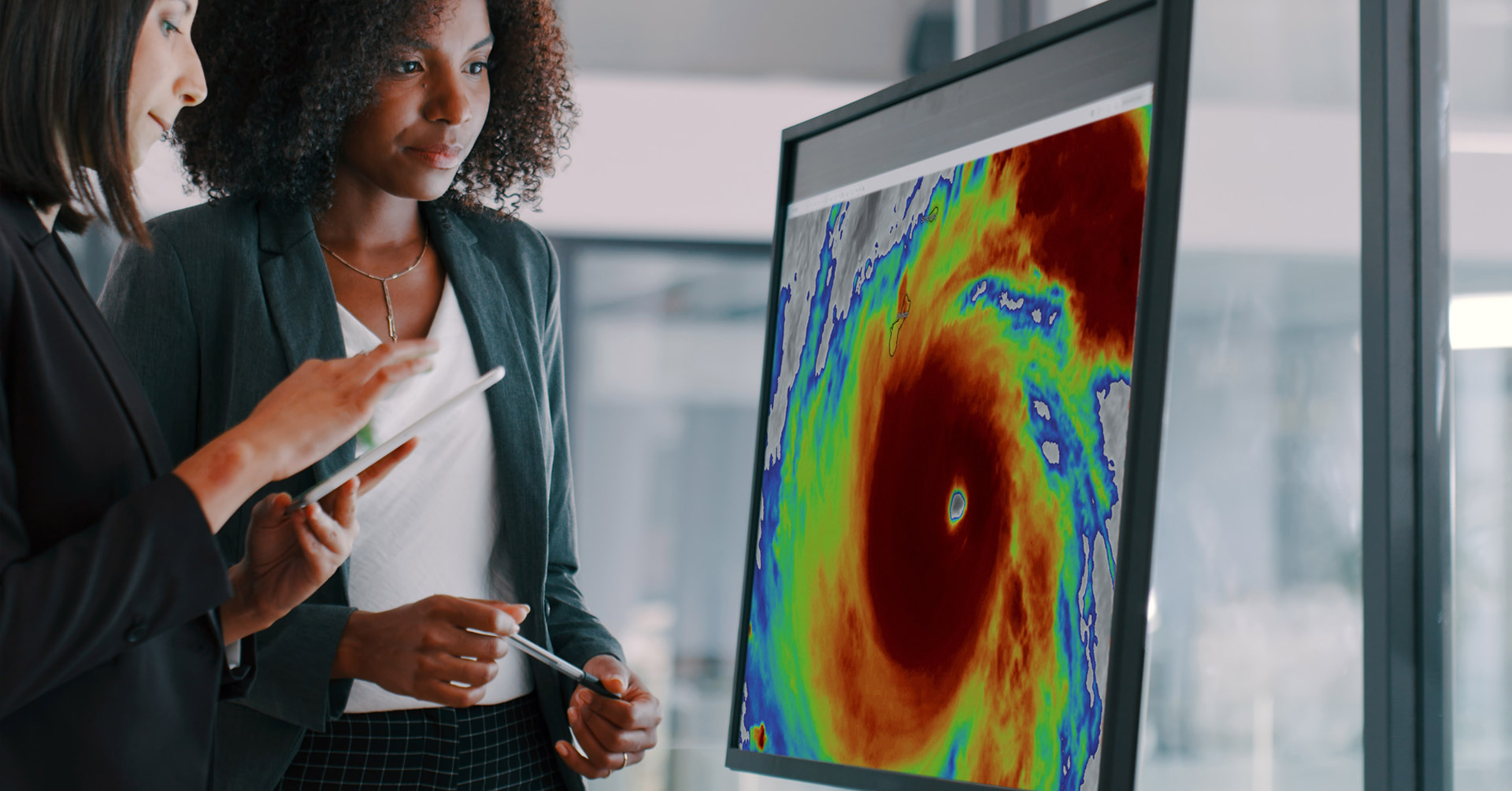
The American Red Cross on Disaster Preparedness: Q&A
Jennifer Pipa, VP of Disaster Programs at the American Red Cross, shares how emergency managers can improve their organization’s preparedness and response programs to better protect their people.

When disaster strikes, thousands of American Red Cross employees and volunteers work tirelessly to provide immediate aid and assist in recovery. However, the Red Cross must ensure the safety of its team before it can help others.
Jennifer Pipa, VP of Disaster Programs at the American Red Cross, oversees the development, implementation, and continuous improvement of disaster services programs. Jennifer recently joined us on The Employee Safety Podcast to offer her expert advice on how emergency managers can improve their organization’s preparedness and response programs to better protect their people.
You can listen to the episode on Apple Podcasts, Spotify, or below.
Can you tell us about your role and responsibilities at the American Red Cross?
I am responsible for our disaster programs, including large-scale disaster relief for hurricanes, wildfires, and severe weather events. We also respond to single-family house fires—the most prevalent disasters that we respond to—about 60,000 times a year. We call those silent disasters because people rarely hear about them. With fifty regions and thousands of volunteers, we deliver the Red Cross mission to single families after a house fire or 250 families who need a safe place to stay after a tornado. We have a unique, scalable program that allows us to meet people where they are and take care of their needs accordingly.
You’ve been with the Red Cross for 18 years now. What is your favorite part of your job, and what motivates you to keep doing this kind of work?
When I joined the Red Cross, I was looking for a way to help my community. I discovered the home fire response program, where you can sign up for an overnight shift and help families who have lost their homes. I did some training and signed up for the 6 p.m. to 6 a.m. shift. I will never forget the first family I helped. It was a mom and dad with two small children. The mom was in tears because she was overwhelmed with the help we could provide, and I felt honored to help somebody in their toughest moment.
“Information is the most valuable currency for the first 48 to 72 hours of a disaster.”Jennifer Pipa VP of Disaster Programs at the American Red Cross
What keeps me going is the spirit of the Red Cross. I was in Kentucky after the tornadoes that occurred right before Christmas, and I witnessed 300 volunteers fly across the country during Christmas to help strangers they’d never met. It’s a gratifying experience to see people coming together to help communities recover. Every time I see that volunteerism, it reminds me why I get up every morning and do what I do.
How many volunteers do you work with in your nationwide disaster services programs, and how do you keep them safe so they can continue to help others?
We have hundreds of thousands of volunteers with the American Red Cross and tens of thousands that specifically help us in disasters. It’s been challenging with the advent of COVID to ensure that we keep our volunteers safe and the people we are serving. We consistently kept our volunteers informed about how we were protecting them and carrying out our mission. Protecting families and individuals was the focus of every conversation we had over the last two and a half years as we’ve navigated disaster response in an endemic environment.
What are the biggest takeaways for organizations regarding disaster preparedness, response, or recovery?
Relationships are the heart of everything that we do. You have to know your local community leaders to be able to connect immediately and say, “We’re going to need to take care of 75 families. Do you have space that we could use to do that?” The one thing you can’t get back in a disaster is time, so any relationships you can establish ahead of time can make all the difference. These relationships have helped us create better outcomes for families, the community, and our organization.
Being weather-aware is a huge part of success at the onset of a disaster. For example, if you see a high likelihood of tornadoes coming through an area, you can work with community leaders or faith-based partners to establish shelters for the community. Finally, communication is key. Information is the most valuable currency for the first 48 to 72 hours of a disaster. Those who are impacted want to know how bad the situation is and where they can get help, find a shower, or charge electronics. We ensure that we’re communicating through various channels to let folks know where they can get help.
What role does communication play in your efforts to keep all your employees, volunteers, and clients safe?
Whenever we do an after-action report, communication always comes up as one of the things we can improve. We communicate with as many people as possible across multiple channels, but we also adopt simple communication efforts like posting flyers on the tops of people’s trash cans. If we’re opening up a shelter or a center where people can get help, this is a simple but effective way to reach people. It’s incumbent on us to share Red Cross services and state and federal resources to help communities navigate all of the options they have to begin their recovery journey. Proactive communication is critical. People don’t always hear and absorb a message the first time they hear it, so our standard is to repeat a message five to seven times. During disaster relief operations, our volunteers rotate out every two to three weeks, so we continuously communicate information and goals to all volunteers.
Do you have any specific tips or advice for Emergency Managers or Crisis Managers on how to improve their programs?
Since 2016, the tempo of disasters we’ve experienced has increased significantly. Large-scale disasters used to be an acute issue, but today, they have become a chronic issue that we respond to about once every 12 to 18 days. We have to prepare our teams for chronic disaster response and ensure that they’re ready for the next community impacted because it’s not a matter of if but when.
I think emergency managers are feeling overwhelmed and burnt out, so it’s our responsibility as leaders in emergency management to make sure we’re figuring out how to move forward. I would highly encourage leaders to think about what interventions they can take to prepare for potential disaster events. Hurricane season is a great example. The NWS has forecasted an above-average hurricane season, so we know that storms will be longer and more intense. On top of that, wildfire season will run concurrently with hurricane season. Those are no longer two separate events that you can plan for. We have to be ready to respond to both simultaneously on different sides of the U.S.
What are some ways that organizations can work with the American Red Cross to support disaster preparedness or recovery in their communities?
The Red Cross has chapters across the U.S. that you can get involved in. We also have preparedness activities that you can sign up for, like helping install free smoke alarms in people’s homes to help prevent house fires. Anyone can volunteer to help us respond and take care of their local community members on the disaster side. Even if you don’t want to volunteer with the Red Cross, just check on your neighbors when something happens in your community. You don’t have to be a Red Cross volunteer to do that. You just have to have a humanitarian spirit.





